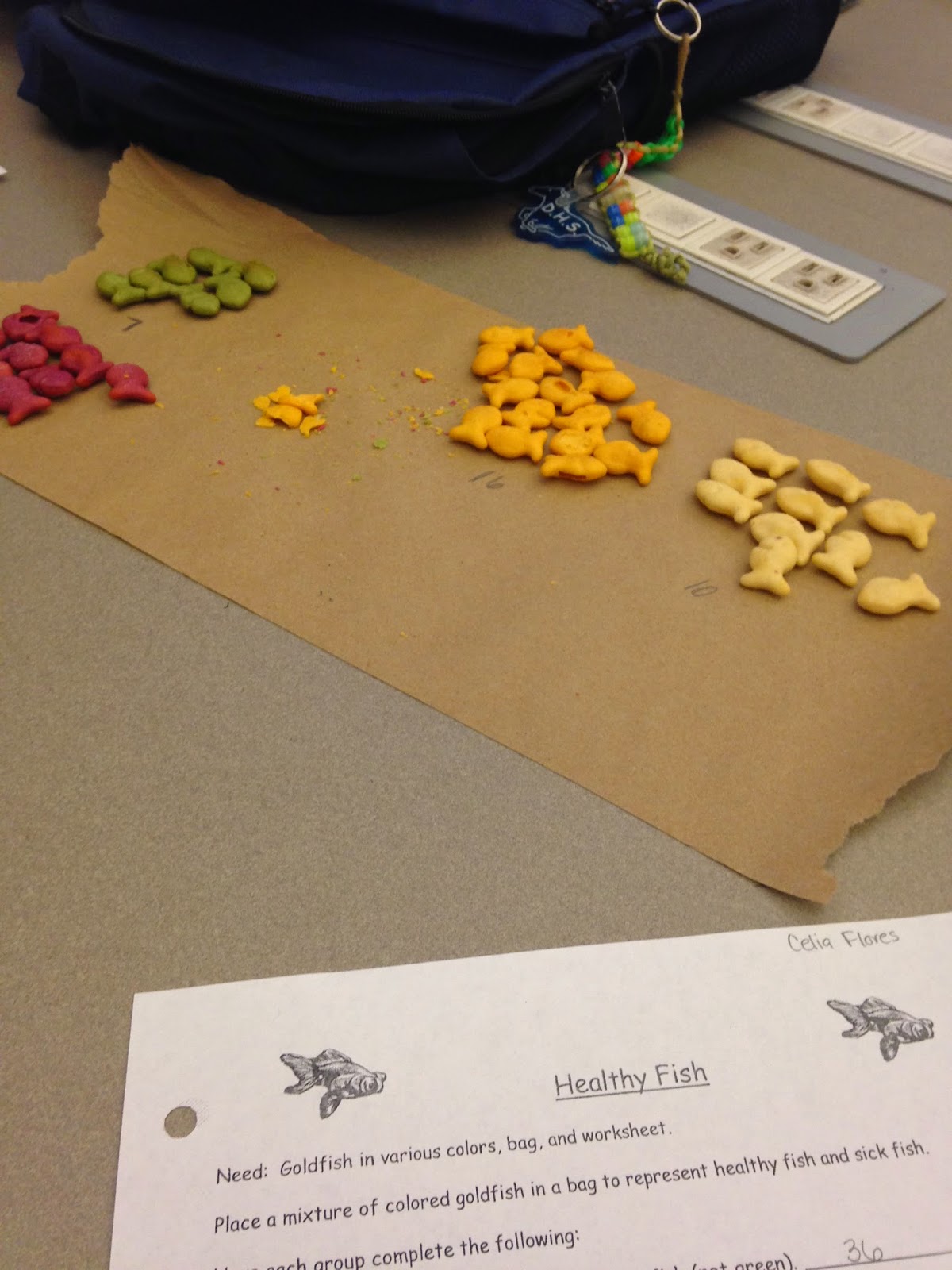Probability is a hard concept for small children to grasp unless you give them an activity to work through. That is exactly what we did on March 24 of 2015, we played with goldfish! The material you would need to replicate this activity would be: edible goldfish of at least two different colors to represent healthy and sick goldfish, a zip-lock bag, and a probability worksheet. Next you have the children record how many sick fish, healthy fish, and the combined total of all the goldfish that were in each of their bags. Now they are ready to calculate the probabilities, like the probability that a fish in their sample is healthy or the probability that a fish in their sample is sick. They decide whether they compute these probabilities in percentages, fractions, or decimal form. This way they learn the different ways they can show probabilities. Going on to the next step they add together the probability of getting a sick fish plus the probability of getting a healthy fish. When they add them up they will see that the total comes to one because these events are mutually exclusive. This means that the fish cannot be both sick and healthy at the same time. Continuing forward they will compute the probability of not getting a healthy/sick fish. This step introduces them to complements. No, I do not mean admiration I mean the opposite of something. For example the opposite of a healthy fish is a sick fish. Lastly, they will be learning proportion. Proportions means that two ratios are equal which will show them how to figure out a missing part of a problem. For example, 7/43 = x/300 this can be solved by cross multiplying which gives you an approximation of 48.
 We as a class discussed and went over these concepts to agree and discuss over how and why this is important for children to know. Of course, math is always a wonderful thing to know and teach to everyone. For me this was a very easy thing to understand but reminded me of complements, proportions, and mutually exclusive problems. Every time I think of this activity and do it with my future classroom I will remember of the fun times we had in class :)
We as a class discussed and went over these concepts to agree and discuss over how and why this is important for children to know. Of course, math is always a wonderful thing to know and teach to everyone. For me this was a very easy thing to understand but reminded me of complements, proportions, and mutually exclusive problems. Every time I think of this activity and do it with my future classroom I will remember of the fun times we had in class :)
Click here for more!
 We as a class discussed and went over these concepts to agree and discuss over how and why this is important for children to know. Of course, math is always a wonderful thing to know and teach to everyone. For me this was a very easy thing to understand but reminded me of complements, proportions, and mutually exclusive problems. Every time I think of this activity and do it with my future classroom I will remember of the fun times we had in class :)
We as a class discussed and went over these concepts to agree and discuss over how and why this is important for children to know. Of course, math is always a wonderful thing to know and teach to everyone. For me this was a very easy thing to understand but reminded me of complements, proportions, and mutually exclusive problems. Every time I think of this activity and do it with my future classroom I will remember of the fun times we had in class :)Click here for more!



No comments:
Post a Comment